 STOWARZYSZENIE TEATR M U M E R U S
STOWARZYSZENIE TEATR M U M E R U S
 STOWARZYSZENIE TEATR M U M E R U S
STOWARZYSZENIE TEATR M U M E R U S
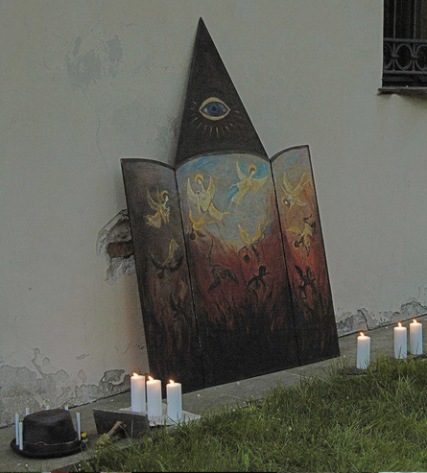 |
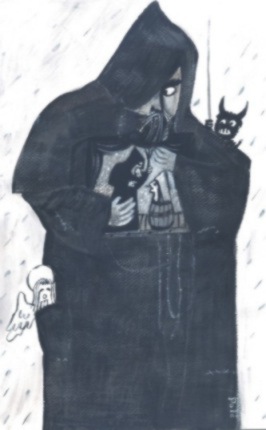 |
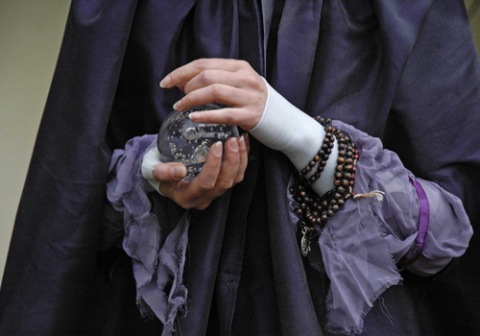 |
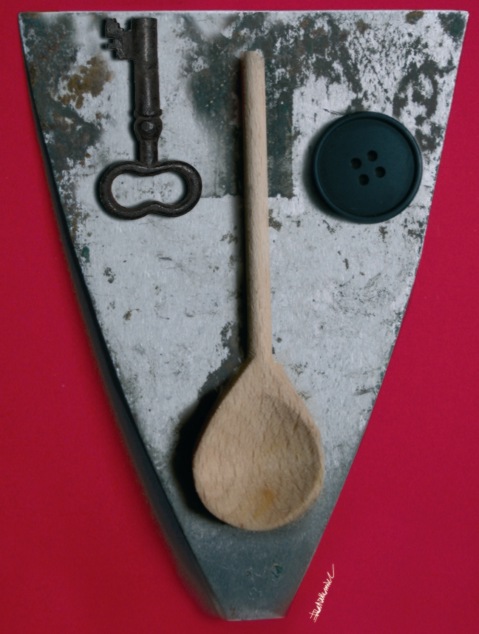 |
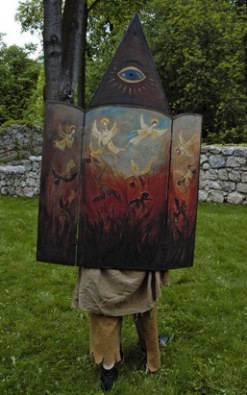 |
| Fot.: IP | Drawing: Jan Polewka | Fot.: IP | Project of information sheet: Ewa Natkaniec | Fot.: IP |
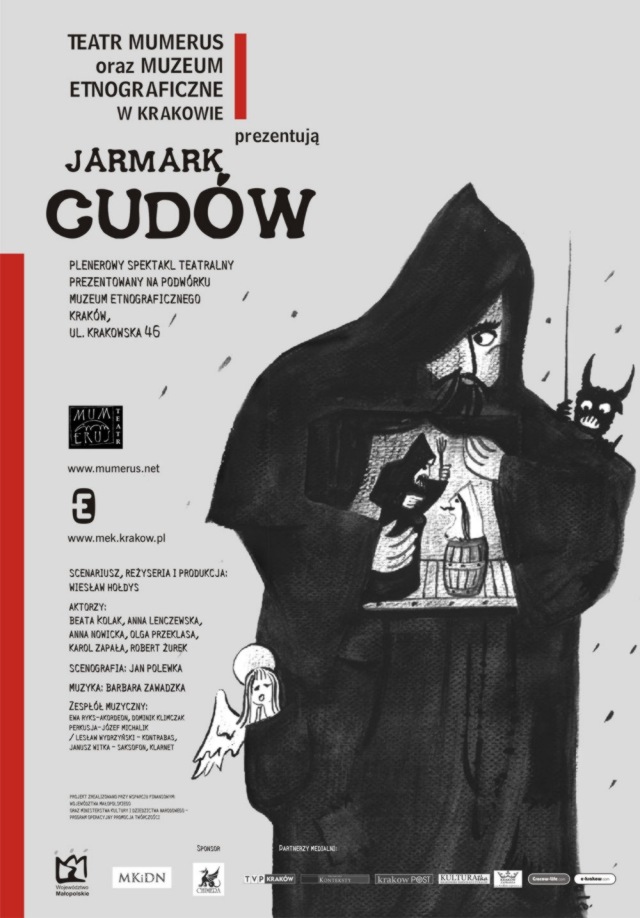
Miracle Fair
The theatre performance Miracle Fair (Jarmark cudów) is still another iteration of the project The Myth of Central Europe: The Miracle Fair, yet created in two versions: as an open air performance by Teatr Mumerus, created in partnership with the Ethnographic Museum in Cracow and played on its yard.
We presented on that yard a variety of magical items, spells and remedies, performances by travelling jugglers and charlatans; pilgrims, beggars and mendicants appeared here and there in the crowd. One could be healed from possession, buy magical items and remedies against all illnesses and then he can watch a puppet theatre showing Poverty and Misery who will never leave our country. The fair sometimes turns into a witches' sabbath and the visitors can even see the Satan in his own, fearsome person.
The other version of the performance is intended to be shown indoors, in Teatr Zależny of the Technical University of Cracow.
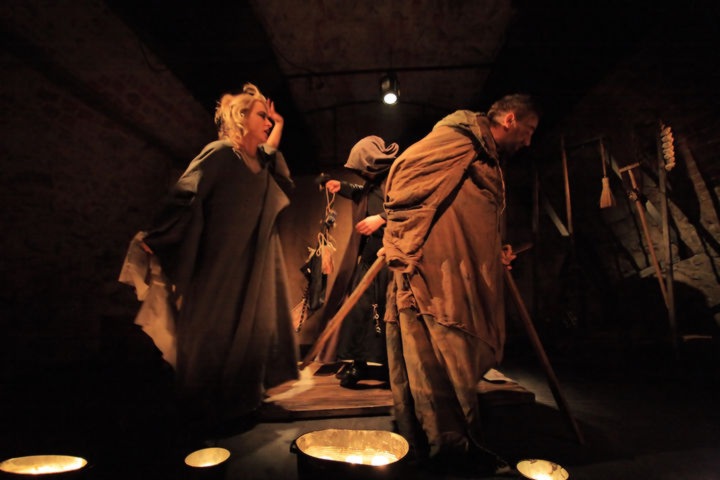 |
 |
 |
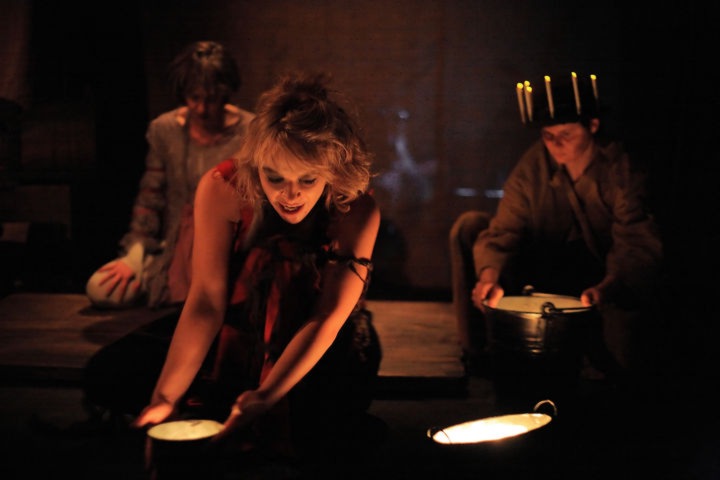 |
The performance alludes to the tradition of Eulenspiegel, or a fool's (or, actually, owl's) mirror. For this reason, the script includes fragments anonymous texts typical for this literary trend, such as Mendicant Travels, Poverty and Misery Leave Poland; although they date back to the 17th century, they sound very modern. Other texts used in the performance are various magical formulas, spells and recipes. The choice of the texts is related to another significant aspect of the project, which is magic and sorcery.
Fot. KZ
Players:
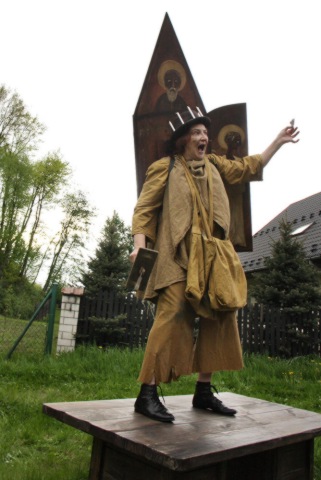 |
 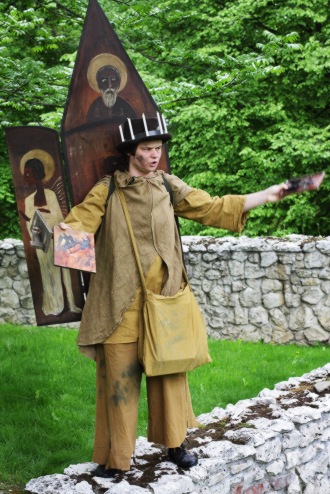 |
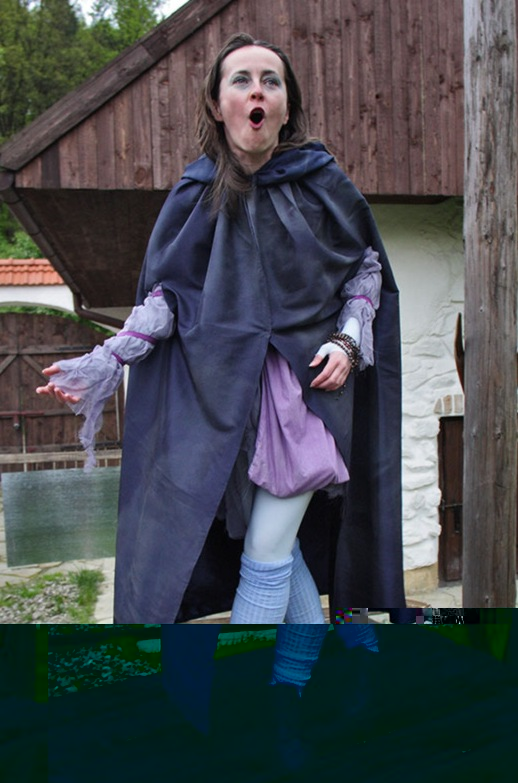 |
||
| Beata Kolak Fot.: MP | Olga Przeklasa fot. MP | |||
|
|
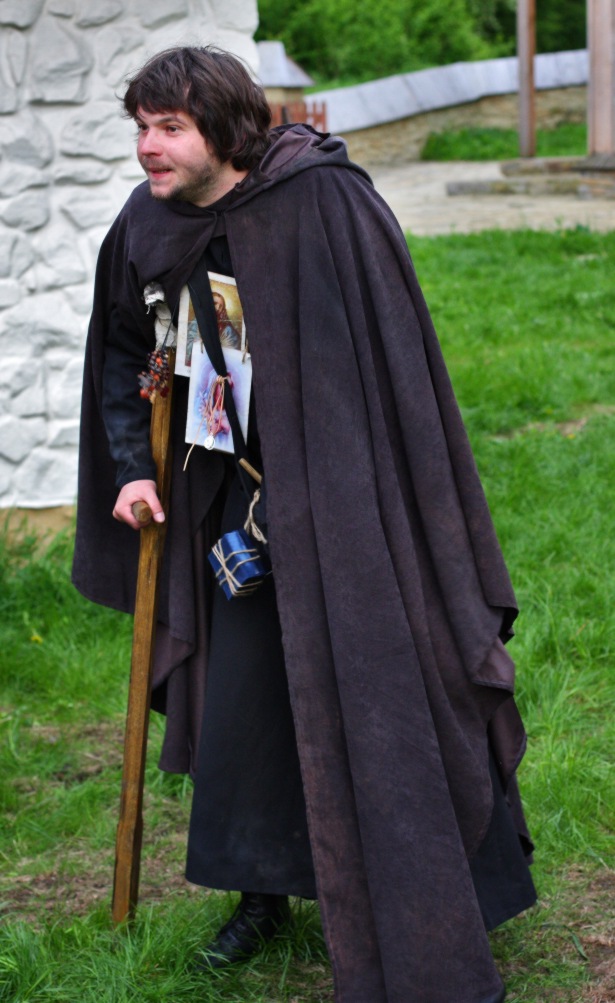  |
|
||
| Karol Zapała Fot.:MP | Robert Żurek Fot.:MP | Projekt ulotki: Ewa Natkaniec | ||
Ewa Ryks - accordion, Dominik Klimczak - drums, Józef Michalik / Leszek Wydrzyński- double bass, Janusz Witka / Krzysztof Klima - clarinet, saxophone
Scenario, directing, production by Wiesław Hołdys
Set - design, costumes, projects of puppets and poster by Jan Polewka
Music by Barbara Zawadzka
|
|
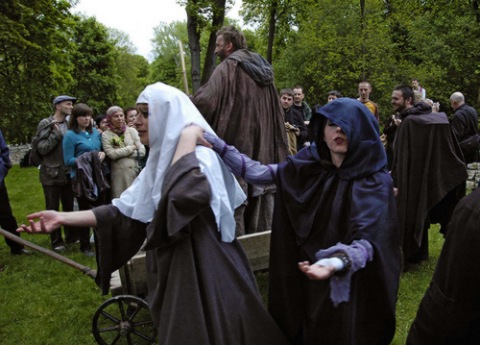 |
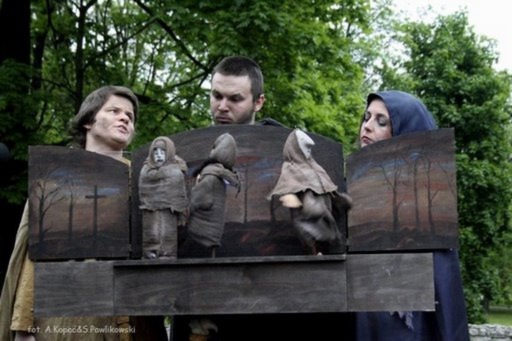 |
|
||
| Fot. MP | Fot.: IP | ot. SP | ot. MP | ||
| Project is realised thanks to finnancial support of: | Project is realised thanks to finnancial support of: |
|
Ministry of Culture and National Heritage Ministerstwa Kultury i Dziedzictwa Narodowego - Program Operacyjny Promocja Twórczości |
| Partners: |
 |
|
|
|
Photo credits by: Artur Łoboda(AŁ), Ilja van de Pavert (IP), Sobiesław Pawlikowski (SP),Kinga Piechnik (KP) Marcin Popczyński (MP), Krzysztof Zembrzuski - Muzeum Etnograficzne Kraków (KZ) | |
|
|
|
|
|
|
fot. KZ
On September15th, people gathered in the yard of the Ethnographic Museum in Cracow saw a magician who moved this small space of a few square meters, together with all the guests, back in time, by 400 years.
Suddenly, the disoriented people from the 21st century found among
themselves a number of pilgrims, jugglers and traders, encouraging them to
buy goods.
"Come here, come here! Come here now! Come closer! My goods are both
good for prayer and for adornment. Here I sell scapulars, rosaries, holy
medals and pictures, as well as ribbons, tapes and beads! Here in this
basket I have potent remedies, such as seeds against worms, sulphur acid
against rashes and camphor, to be dissolved in vodka... a powerful remedy
against dry pains, bruises and all swellings... I have here also sulphur and
magnesium for all stomach acids. This box contains a small imp caught
unawares. Whoever purchases the box and frees the imp, he will have this
little servant forever, grateful to be free from iits ncarceration.(...)"
The stranger has not yet finished his list, when people heard behind their
back an imperious call of one of the women:
"Lamb figures! Come, people and by lamb figures! Lamb figures of
extraordinary power, or God's Rams. Made of burnt remains of the Pope's
paschal candle, seven times sprinkled with Holy Water by seven Holy
Fathers. Each of them consecrated them seven times, every seventh year of
his rule on Earth. Then such lamb figure, consecrated how many times? Not
seven but forty-nine times! Then such lamb figure, I say, is forty-nine
times stronger than a common lamb figure. (...) They extinguish fire, hot
fire, much better than St Agatha's salt. Remember, men! Buy the lamb
figures!"
Somebody is selling good books, other person persuades people to buy powder
against the Grim Reaper.. actors are calling for a puppet show: Poverty and
Misery leave Poland. The yard is noisy, crowded with buyers and
onlookers... when suddenly a scream is heard... a scream of a possessed
woman. A monk calls everyone to pray for her and expels the evil spirit.
Then, people begin to sing and dance, accompanied by 17th century music.
"Where are the happy times of old
When sausages flew over and we had gold."
Some beggar, or fraud tries to wheedle some money... a woman in the hat
surrounded by lit candles has now disappeared... the sound of music and
human voices is becoming more and more distant... the hour has struck and
the spell is over, just like in the story of Cinderella. We are back to
modern times.
(...) The Miracle Fair refers back to Old Polish theatrical forms based on
direct contact with the audience. The shows were performed on yards, with
actors reciting their parts just among the people. The texts used in the
script, including Mendicant Travels and Poverty and Misery Leave
Poland are fragments of 17th century works. The remaining ones, such
as spells and remedies against demons, written by the director of the
performance, are based on ethnographic sources.
" I am so fond of digging among old things," continues the director. "In my
opinion, it is so modern. Hardly anything has changed since those times.
Particularly the plebeian writers, who were just common people, knew a lot
about others and they created texts who are still valid. I do not perceive
them as archaic. I dislike any modernisations of classical texts. Such
practice is simply fooling people."
(...)However, a sorcerer of old ages can freely come and enchant the audience, transferring people back to the world which is so dear to his heart. The Internet generation will suddenly found themselves at a fair, meeting people who are so close to them, although they come from "olden times" . (...)
Dominika Putyra
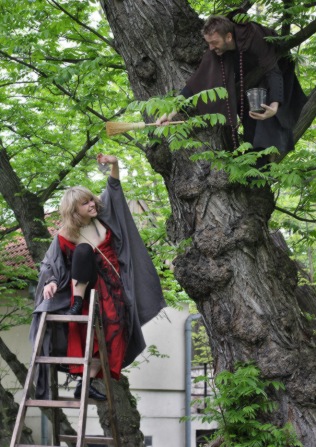 Fot. MP |
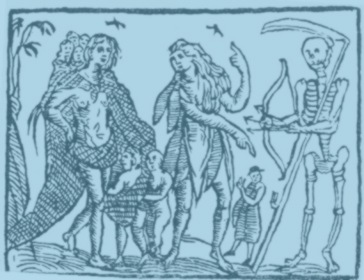 |
fot. KZ |
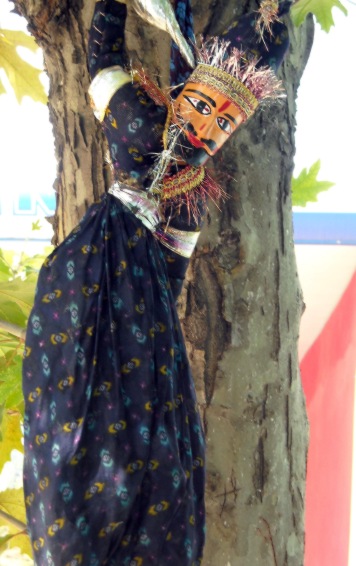 Albania 2008 - A puppet hanging on a tree |
© 2008 mumerus
Wszelkie prawa autorskie zastrzeżone.